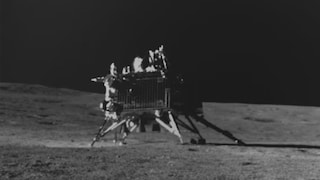
ISRO’s Aditya-L1 Solar Observatory has the 6-metre boom carrying 6 magnetometers while in orbit around the L1 point. The magnetometer boom is designed to study the low-intensity interplanetary magnetic field in space.
A crucial milestone was achieved in India’s Aditya L1 mission to study the Sun as the six-magnetometer boom was successfully deployed earlier this month.
The announcement by the Indian Space Research Organisation (ISRO) revealed that the 6-metre boom, folded for 132 days during the spacecraft’s 1.5 million-kilometer journey, was deployed on January 11.
The magnetometer boom, a rod-like structure with state-of-the-art high-accuracy sensors placed at distances of 3 and 6 meters, is designed to study the low-intensity interplanetary magnetic field in space.
Related Articles

ISRO develops second-generation distress alert transmitter for fishermen

NASA & ISRO’s Rendezvous: Lunar orbiter pings India’s Chandrayaan-3’s Vikram Lander on the Moon
Placing the sensors at different distances helps minimize the impact of the spacecraft-generated magnetic field on measurements and enables precise estimation by cancelling out influences.
The boom structure, constructed with carbon fibre-reinforced polymer segments interconnected with spring-driven hinge mechanisms, can be folded close to the spacecraft during the journey and deployed once the orbit is reached.
During deployment, the boom fanned out, and the hinges locked in position. Telemetry data confirmed the release of hold-downs, first motion, and locking of all hinges. The observed in-orbit deployment time of approximately 9 seconds matched the predicted range of 8 to 12 seconds.
Aditya-L1 is a space-based observatory specifically designed to study the Sun and its explosive phenomena across multiple wavelengths and directions.
The spacecraft carries seven experiments to analyze the radiation, particles, and magnetic field emitted by the Sun. Positioned in an orbit around Lagrange Point 1 (L1), the observatory enjoys an unobstructed view of the Sun round the clock throughout the year.
The L1 point, acting as a gravitational parking spot, is about 1 per cent of the distance between Earth and the Sun, ensuring the satellite remains in orbit with minimal fuel expenditure.
(With inputs from agencies)
